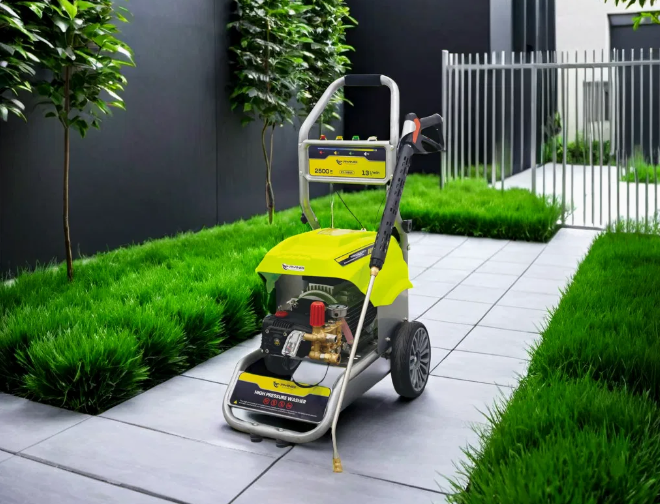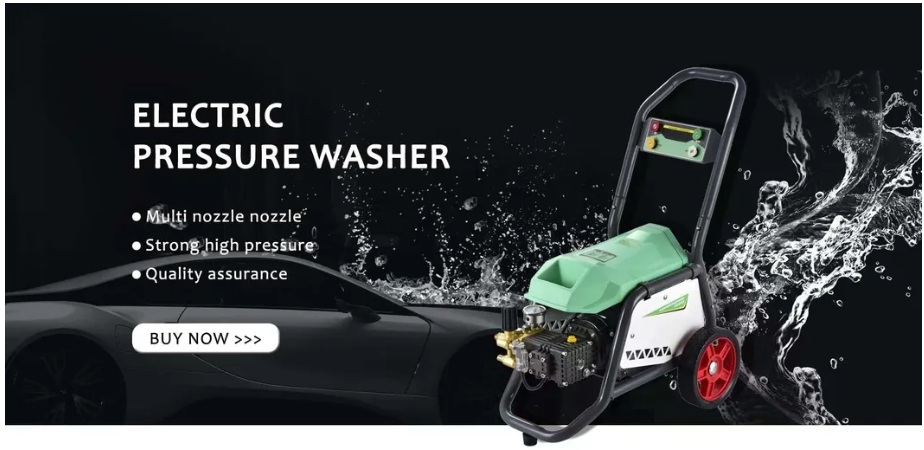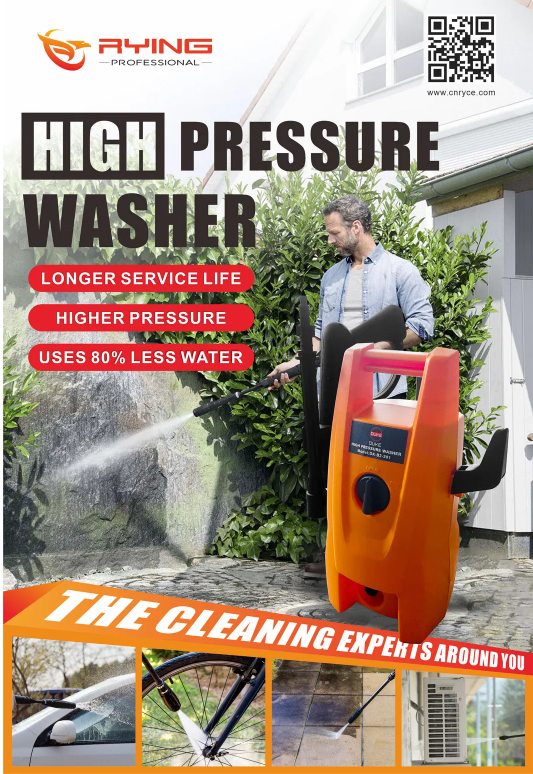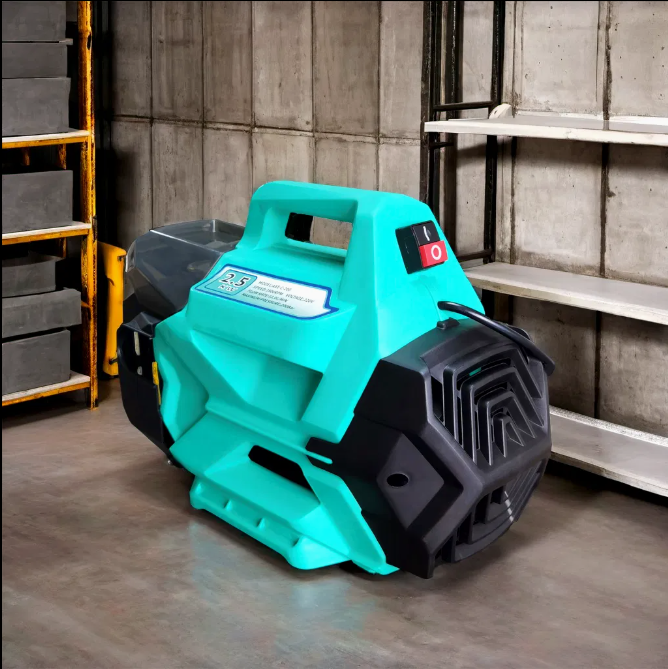Is it better if the car washing machine has greater power?
When choosing a car washer, many consumers fall into the misconception that higher power means better cleaning results. However, the reality is not so simple. Car washer performance is the result of the combined effects of multiple factors, including pressure, flow rate, and power. Blindly pursuing high power can be counterproductive. A multi-dimensional analysis, including operating principles, usage scenarios, and actual needs, is necessary to make an informed choice.

1. The Dialectical Relationship Between Power and Performance
The core parameters of a car washer include operating pressure (bar), flow rate (L/min), and power (W). These three factors are in a dynamic balance: pressure determines impact force, flow rate affects coverage area, and power is the energy foundation for achieving the first two. In theory, higher power can support higher pressure or flow rate, but actual product design varies significantly.
Take common models on the market as an example:
1500W models typically provide 80-100 bar pressure and approximately 6-8 L/min flow rate.
2000W models can reach 120-150 bar pressure and 8-10 L/min flow rate.
3000W commercial models can reach over 200 bar pressure but require 380V power.
It's worth nothing that some manufacturers sacrifice flow rate for high pressure, resulting in lower cleaning efficiency despite high nominal power. For example, actual test data from a car forum showed that a certain brand's 1800W model, due to an optimized water pump structure, actually outperformed a 2200W model from a different brand. This is because cleaning efficiency depends not only on pressure but also on the water flow rate per unit time. Simply high pressure without sufficient flow results in limited cleaning coverage and reduced actual cleaning efficiency.
 II. Power Requirements for Different Scenarios
II. Power Requirements for Different Scenarios
(I) Daily Home Cleaning
1500-1800W is completely sufficient. These models have a pressure between 80 and 120 bar. When used with a PA sprayer (a foaming sprayer that uses high-pressure water mixed with detergent to create rich foam, softening stains and minimizing paint damage), they can produce a fine foam. Cleaning a car takes approximately 15-20 minutes. A test by an automotive media outlet showed that a 1600W model takes an average of 18 minutes to clean a compact car, less than 2 minutes longer than a 2000W model, making it more than sufficient for daily home cleaning needs.
(2) Deep Cleaning Needs
For applications such as off-road vehicle chassis and those with long-term dust accumulation, a 2000-2500W model is recommended. However, be aware that pressures exceeding 200 bar can damage the paint. Professional repair shops often use pressure regulating valves to control pressure and prevent damage.
(3) Commercial Use
Commercial models with a power of 3000W or higher should be considered, but these devices require professional training and regular maintenance. Data from a car wash chain indicates that over-reliance on high-power equipment can increase utility costs by 30%. Therefore, commercial locations must strike a balance between cleaning efficiency and cost.

III. The Key Role of Energy Efficiency Ratio
The latest EU energy efficiency standards categorize car washers into seven grades, A-G. Testing found:
Grade A products (e.g., a 1600W model from a German brand) consume 2.8 m2/kWh per unit cleaning area.
Grade D products (e.g., a 2200W model from a domestic brand) consume only 1.9 m2/kWh.
Some products with inflated power ratings have energy efficiency ratios as low as 1.2 m2/kWh.
This clearly demonstrates that simply increasing power without optimizing system design can lead to energy waste. A laboratory teardown revealed that high-quality brushless motors can achieve 92% efficiency, while low-cost carbon brush motors only reach 75-80%. Therefore, energy efficiency ratio is a crucial metric that cannot be ignored when purchasing a car wash, as it directly impacts operating costs and energy consumption.
IV. Hidden Factors Contributing to Cost of Use
(I) Power Supply
Models above 2500W require a dedicated 16A socket. Older residential buildings may require electrical wiring modifications, which not only increases installation costs but also poses safety risks.
(II) Consumables
High pressure causes filters and seals to age faster. One user reported that seals on a 200-bar model require replacement every three months on average, which undoubtedly increases ongoing costs.
(III) Water Expenses
High-flow models (>10L/min) can use up to 200L of water per car wash, double the amount used by standard models. With water resources becoming increasingly scarce, this not only increases water costs but also violates environmental protection standards.
After-sales service data from an e-commerce platform shows that the return rate for models over 2500W is 40% higher than that for models under 1800W. The main failures are motor overheating and pressure system leaks, further highlighting potential reliability issues with high-power models.

V. Practical Purchasing Tips
(1) Check Certification Marks
Choose products with CE, GS, or CQC certification. These marks indicate that the product has undergone rigorous quality testing. The power rating is more accurate, ensuring product quality.
(2) Listening to Determine Quality
High-quality motors have a smooth, low-pitched sound, while inferior products have a sharp, whistling sound. When purchasing, listen to the sound on-site to judge the motor's quality.
(3) Check Actual Parameters
Focus on comparing "rated pressure" and "flow rate," rather than simply looking at the power figures. These two parameters are directly related to the car washer's cleaning performance and require careful inspection.
(4) Consider scalability
Some mid-power models support external water tanks, making them more suitable for use in rural areas or areas without a regular water source. Consider this factor based on your specific usage scenarios when purchasing.
(5) Focus on Brand and After-Sales Service
Choosing products from reputable brands generally offers better quality control and after-sales service. Good after-sales service can promptly resolve any product issues, reducing worries.
The three models recommended in a vertical website's annual review all have a power of around 1800W, but their turbocharging technology enables them to achieve cleaning power exceeding that of typical 2000W models. Notably, these models are 15-20% more expensive than competing products of the same power, yet their three-year operating costs are 30% lower. This clearly demonstrates that when choosing a product, one should not only consider price but also the overall cost of ownership.
VI. New Technology Breakthroughs
(I) Variable Frequency Technology
This technology automatically adjusts power based on the severity of dirt, achieving a 40% energy saving in one Japanese brand. This technology maximizes energy savings and reduces operating costs while ensuring effective cleaning.
(II) Lithium Battery High Voltage
Cordless models now boast power levels up to 800W and pressures up to 140 bar. The use of lithium battery technology makes car washers more portable, freeing them from the constraints of power cords and making them more convenient to use.
(III) Solar Hybrid
An Australian company has launched an off-grid system suitable for field operations. This technology utilizes solar energy, making it environmentally friendly and suitable for use in areas without a power grid, expanding the application scenarios for car washes.
These innovations indicate that the future development direction of car washes will be "precision power" rather than "absolute power." An industry white paper predicts that by 2026, products with intelligent power regulation will account for 60% of the market share, demonstrating the growing market demand for intelligent, energy-saving car washesr

In summary, choosing a car washer power should adhere to the principle of "just enough for the job." For the average car owner, a 1600-1800W model offers the best value. Those with special needs can consider models around 2000W, but they should be aware of the necessary equipment. High-power commercial equipment is only necessary for specialized applications. Remember, good cleaning results equal appropriate pressure, scientific techniques, and regular maintenance. Simply relying on increased power is like using a cannon to swatter a mosquito: it wastes resources and can cause unexpected damage. When purchasing, consider all factors comprehensively and make a sound, rational choice.
